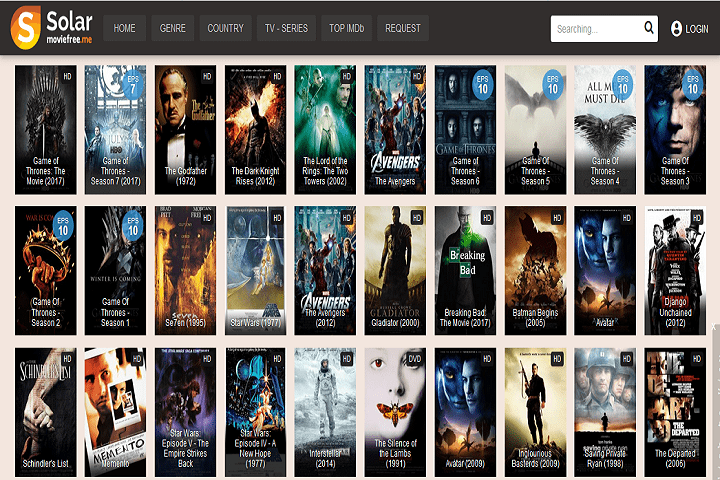Internet
Twitter as a Relevant Business Growth Tool
Creating the right Twitter business account to growing Twitter followers all help you reach out to new potential customers. Twitter as a relevant business growth tool.

Twitter is the most famous social media platforms with over 335 million users worldwide, and these users send over 500 million tweets per day. Therefore, it could be a great platform to connect with a broader audience and drive traffic to your business website.
Creating the right Twitter business account to growing Twitter followers all help you reach out to new potential customers. And if you use proper techniques, it might not cost you a dime. So, let’s see how Twitter as a marketing tool can be beneficial for your growing business.
Table of Contents
1. Drive Traffic to Your Webpages
Your website visitors can be your returning customers, and the chances are very high. But you need to drive traffic to generate leads, and Twitter is the best tool for that purpose. You can add the link to your website in the bio, or you can even tweet randomly about your business.
Beware of not spamming your followers with all your business-oriented tweets, as this may drive them away from you. It would help if you kept a delicate balance between tweeting about your customer’s concerns and your business.
2. Boost Your SEO
Most of the time, when a person has to get their hands on a product, they are most likely to search about it on Google. Using the right keywords in your tweets and even bio can help you rank on Google, and this way, people will be able to know about your brand.

3. Reach International Audience
Would not it be great if you were able to reach international and a wider audience? Twitter has users worldwide, and your Twitter can help you get a diverse fan base. By doing so, you have a greater chance of getting recognized in the brand worldwide and competing with your competitors.
You can even research and see what hashtags your competitors are using to reach a broader audience or look for what’s trending in your niche. Using the appropriate and relevant hashtags can also help you target the right audience.
4. Deliver Customer Support and Gather Feedback
You can build a loyal customer base if they know you genuinely care about them. Responding to their DMs, tweets and their queries shows them that you are not all about making sales. For instance, Netflix has set up their Twitter account to address its users’ concerns and issues in different languages.
They even use the same account to gather feedback on further improving their services worldwide. That’s why Netflix has such a loyal fan base. Therefore, you should always be active in responding to your customers and engaging with them to develop a strong connection with them.
5. Increase Your Sales
Twitter is a free marketing tool. You have to start a cycle of word-of-mouth, and a wider audience will be able to discover you. Also, according to research, 60% of a brand’s followers tend to purchase or recommend products after following them on Twitter. Thus, it can also help you develop brand awareness and drive sales revenue by tweeting about your business and products.
Games
Parimatch starts cooperation with the AFA in Asia
This partnership allows the AFA to expand its international presence and, together with Parimatch, participate in all sports technology events held in Asia.

The global gaming platform Parimatch has announced a new exclusive partnership with the Argentine Football Association (AFA), becoming the organization’s fifth regional sponsor. This partnership allows the AFA to expand its international presence and, together with Parimatch, participate in all sports technology events held in Asia.
Expanding its horizons, the Argentine Football Association is actively entering new strategic markets, involving more than 55 commercial partners. In addition, the association is improving its digital content strategy, including social media in five languages, to help attract new audiences.
The partnership with Parimatch will provide users with the opportunity to participate in various official events, receive autographed t-shirts of the players of the national team of Argentina, and enjoy unique moments thanks to this collaboration.
AFA President Claudio Tapia said: “We express our gratitude to Parimatch, a leading company in the gaming industry, for joining the Argentine football family as a regional sponsor of our national team in the Asian region.”
Tapia stressed that the AFA continues to take active steps to expand its presence in strategic markets and forge alliances with leading companies. This agreement allows the association to work actively in Asia and strengthens its position in the world of football. “We sincerely welcome Parimatch as our regional sponsor,” he added.
The AFA’s Commercial and Marketing Director, Leandro Petersen, stated: “We are delighted to announce a new regional sponsorship in the Asian region between the AFA and Parimatch. This partnership with a market leader like Parimatch will strengthen our position in the international arena and help expand the fan base of the Argentine national team in Asia.”
The press service of Parimatch also expressed satisfaction with the cooperation, underscoring: “We are pleased to work with the Argentine Football Association as its regional sponsor in Asia. This agreement marks an important milestone for Parimatch as we enhance our commitment to growing football in Asia and providing an exceptional playing experience for fans. Our partnership with the AFA allows us to expand our brands and actively engage with football fans in Asia.”
Parimatch reaffirms its commitment to supporting football in Asia and is ready to provide fans with unforgettable experiences as a regional sponsor of the Argentine Football Association.
Through strategic partnerships with leading football organizations such as the AFA, Parimatch continues to promote the development of sports and popularize football culture in Asia, bringing beloved teams closer to their fans.
Parimatch also plays a key role in promoting sports culture in the region. Through its partnership with the AFA, Parimatch provides its users with exclusive access to events and products related to Argentine football. This not only strengthens the Parimatch brand, but also enhances the commitment to sports in Asia.
The collaboration between Parimatch and the AFA demonstrates how strategic alliances can influence the development of the sports industry. Parimatch is constantly looking for new opportunities for development and innovation, and this partnership is another step in that direction. Parimatch users are looking forward to new opportunities that will open up thanks to this collaboration.
-

 Instagram4 years ago
Instagram4 years agoBuy IG likes and buy organic Instagram followers: where to buy them and how?
-

 Instagram4 years ago
Instagram4 years ago100% Genuine Instagram Followers & Likes with Guaranteed Tool
-

 Business5 years ago
Business5 years ago7 Must Have Digital Marketing Tools For Your Small Businesses
-

 Instagram4 years ago
Instagram4 years agoInstagram Followers And Likes – Online Social Media Platform
















